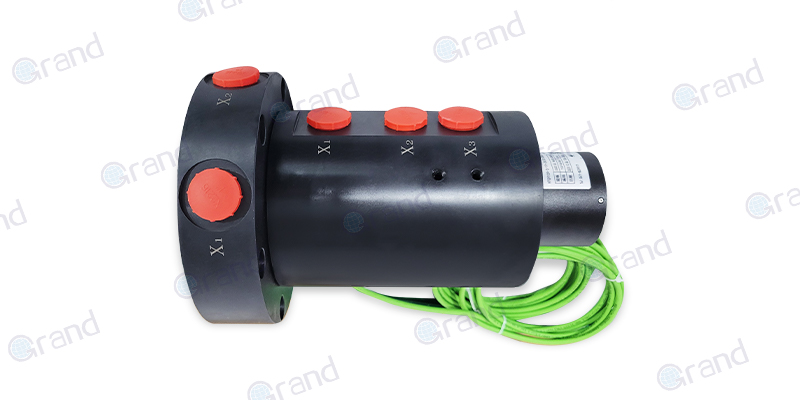This article explores the fundamentals of integrated slip rings, discussing their varied applications, features, and types, and offering insights into choosing the right slip ring for specific requirements. Additionally, we will discuss maintenance and troubleshooting approaches as well as future trends in this rapidly evolving field.
Integrated Slip Rings Introduction
Integrated slip rings are specialized electromechanical devices that facilitate the transmission of electrical power, data, and signals between stationary and rotating components within various systems and applications. They are designed to ensure a reliable and continuous connection, eliminating problems caused by twisted wires or disrupted signal transmission.
These slip rings play a crucial role in a vast array of industries, including renewable energy, aerospace and defense, medical equipment, robotics, telecommunications, and heavy machinery. Their ability to maintain a seamless transmission of power and data while rotating allows systems to operate efficiently, consistently, and safely. The continued advancements in integrated slip ring technology have resulted in increasingly compact, robust, and reliable designs, further broadening their potential applications and impact across different sectors.
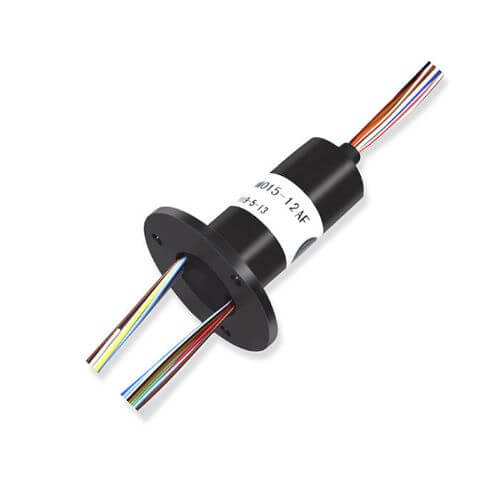
Basics of Integrated Slip Rings
Integrated slip rings are complex electromechanical devices designed to ensure smooth and uninterrupted transmission of electrical power and signals from a stationary structure to a rotating one. By allowing for freedom of 360-degree continuous rotation, they eliminate disruptions typically caused by tangling wires in rotating systems.
These devices consist of two primary components: the rotor and the stator. The rotor, linked to the rotating structure, is essentially a conductive disc that houses the signal or electric power. It rotates in unison with the device it’s attached to. On the other hand, the stator comprises brushes, usually made of metal or graphite, that press lightly against the rotor, transferring electrical power or signals from the stationary structure to the rotating one.
The principal purpose of an integrated slip ring is to assist devices that require simultaneous rotation and electrical signal or power transfer. By allowing power and data to be transmitted without any interruption – even while rotating – they play an indispensable part in various applications. Whether it’s wind turbines that need constant energy to adjust their blades according to wind direction, CT scanners that require precise imaging without any signal loss or disruption during rotation, or satellite antennas that need to maintain continuous signal transfer despite rotation, integrated slip rings lend themselves invaluable to these applications. The essence of their role is to provide a solution for consistent power and signal transfer, improving efficiency and functionality across numerous industrial applications.
Applications of Integrated Slip Rings
Integrated slip rings find utility across a multitude of industries and applications due to their ability to maintain seamless power and signal transmission during rotation. The following industries and applications exemplify the indispensable roles these devices play:
Wind Energy
In the wind energy sector, integrated slip rings are employed within wind turbines to transmit electrical power and communication signals between the nacelle and the stationary tower. They enable the continuous rotation of the nacelle to optimize wind capturing, all while maintaining a stable signal and power transfer. Without integrated slip rings, keeping the cables free from twisting and ensuring efficient performance would be unmanageable.

Radar Systems
Radar systems use integrated slip rings to facilitate the transfer of power and signals between stationary and rotating elements, such as antennas or dishes. In applications like air traffic control, weather prediction, and defense systems, radar dishes need to rotate consistently while transmitting and receiving signals. Integrated slip rings enable this rotation without hampering the accuracy and consistency of data transmission.
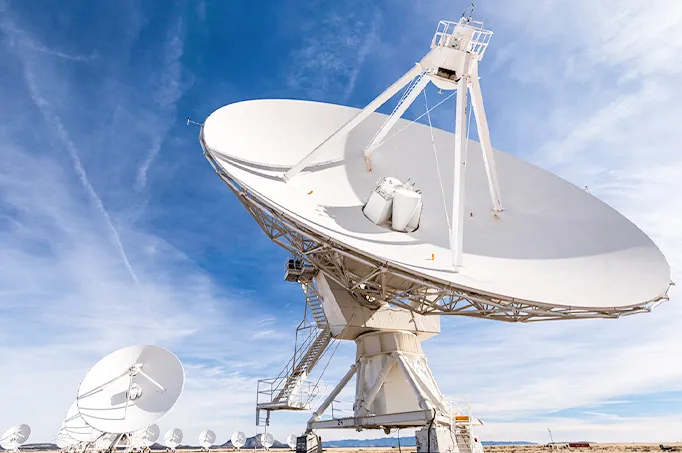
Medical Imaging
Imaging systems in the medical field, such as computed tomography (CT) scanners or magnetic resonance imaging (MRI) machines, utilize integrated slip rings extensively. These slip rings maintain seamless power and signal flow between the stationary and rotating components, ensuring clear and vivid imaging without any disturbances caused by signal disruptions during rotation. Their use significantly contributes to accurate diagnostics and treatment planning.
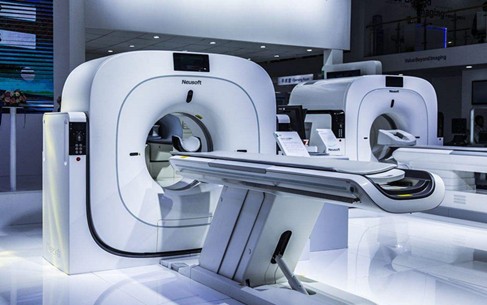
Rotary Tables
Rotary tables, which consist of a motor that powers a rotating platform to convey and manipulate workpieces, often employ integrated slip rings to transmit power and control signals. In industries such as automation, machine tooling, and heavy machinery, integrated slip rings ensure the rotary table can continuously pivot without losing connectivity or sacrificing precision, thus enhancing overall productivity.
Each of these industries showcases the specific roles that integrated slip rings play in ensuring smooth power and signal transmission, ultimately contributing to the reliability, efficiency, and safety of various applications.
Types of Integrated Slip Rings
Integrated slip rings come in various forms to cater to the specific requirements of numerous applications and industries. Understanding the differentiation among these types is essential for selecting the most appropriate slip ring for a given application. Here are some common types:
Capsule Slip Rings
Capsule slip rings are compact and versatile, often used in applications where space is limited and where lower power and signal requirements are necessary. They are apt for use in closed-circuit cameras, medical devices, and robotics due to their small footprint and ability to handle both power and several data channels.
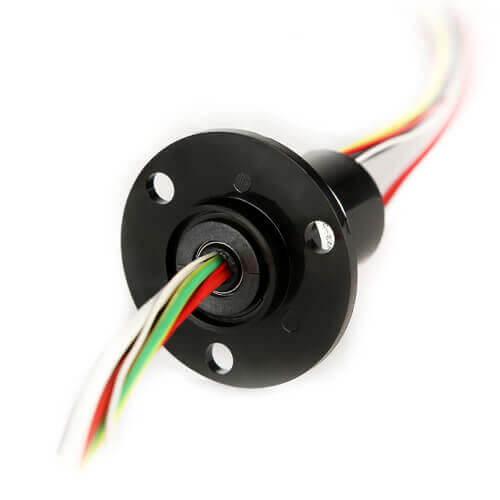
Pancake Slip Rings
These slip rings are flat, disc-like devices that are ideal for applications facing axial space restrictions but have more radial space availability. While they don’t perform as well as other types in terms of longer lifespan and maintenance due to brush wear, they are suitable for slow-rotating applications, such as turntables and satellite antennas, where other options may not fit.

Through-Bore Slip Rings
These slip rings are designed with a hole or “bore” in the center, allowing for the pass-through of shafts, cables, or pneumatic lines. The freedom to route additional components through the center makes them perfect for applications requiring many connections, such as wind turbines, medical equipment, and rotary tables.
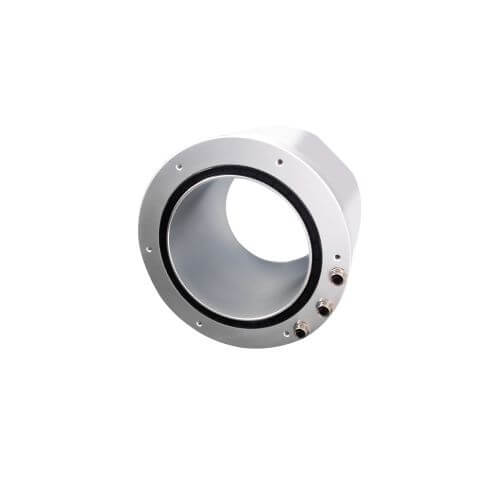
High-frequency Slip Rings
High-frequency slip rings are specifically designed for transferring high-frequency signals. They are equipped to maintain signal integrity and prevent interference, making them ideal for radar systems, advanced communication devices, and applications where high-speed data transmission is crucial.
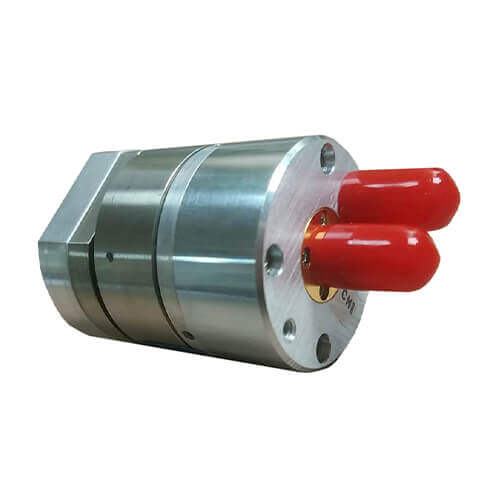
Each type of integrated slip ring carries unique benefits tailored for specific applications. Therefore, understanding each type’s strengths and common-use cases is key to making an informed decision when choosing a slip ring for a particular application.
Key Features of Integrated Slip Rings
Integrated slip rings possess a range of features that culminate in their critical value across diverse domains. These features cater to the unique needs of various applications, ensuring efficient, reliable operation, and system performance. Here are some noteworthy characteristics:
Compact Size
A significant advantage of integrated slip rings is their compact design, making them an excellent choice for applications with space constraints. Their space efficiency doesn’t compromise their ability to handle complex power, signal, and data transfer needs, making them a versatile fit for industries like robotics, medical imaging, and more.
Low Electrical Noise
Electrical noise can disrupt signal transmission and result in unreliable system performance. Integrated slip rings are designed to produce minimal electrical noise, ensuring a clean and stable signal transfer. This feature is crucial for applications that require precise and reliable data transmission like radar systems, broadcast equipment, and sensitive medical devices.
Smooth Rotation
Integrated slip rings aim to facilitate the free, unrestricted rotation of components within a system. By maintaining a continuous, reliable power and signal flow during rotation, these devices contribute to the smooth operation of equipment. This is paramount for wind turbines, rotary tables, and other machinery involving rotating elements.
High Data Rate Capability
With the rise of advanced technologies demanding faster data transmission, integrated slip rings with high data rate capability have emerged to meet these needs. These slip rings can support multiple data protocols, enabling high-speed data transfer and catering to industries like telecommunications, automation, and more.
Evaluating these key features of integrated slip rings according to the specific needs of an application can guide the choice of the most suitable slip ring, aligning its capabilities with the application’s demands.
Choosing the Right Integrated Slip Ring
Selecting an appropriate integrated slip ring involves considering several pivotal factors that correlate with the specific demands of an application. Here are some essential factors to consider:
Operating Speed
The rotational speed of the application is vital to consider as it can influence the slip ring’s performance. Fast-rotating applications may require more advanced slip rings that can handle high rotational speeds without compromising signal integrity or causing excessive wear.
Working Life Expectancy
The anticipated working life of a slip ring should also be given due heed. Factors such as the quality of the materials, frequency of rotation, and operating speed can influence the lifespan of a slip ring. A slip ring with a long working life may prove cost-effective in the long run, particularly for high-duty applications.
Signal Types to be Transferred
Identifying the nature and amount of signals to be transferred can also impact the slip ring selection. For instance, applications necessitating the transfer of high-frequency or data signals would benefit from slip rings specifically designed for these signal types.
Environmental Conditions
Understanding the environment in which the slip ring will operate is crucial, as factors such as temperature, humidity, pressure, and exposure to dust or corrosive elements can affect performance. Choosing a slip ring with properties tailored to these environmental conditions ensures it will function effectively throughout its service life.
To find a slip ring that meets specific requirements, it is advisable to work closely with manufacturers or suppliers who can provide customized solutions. Users should fully communicate their needs, from the technical demands of the application to environmental considerations, to identify a slip ring that aligns with their specific circumstances. A one-size-fits-all approach can be risky, so tailoring the chosen slip ring to the precise requirements of the application is key.
Maintenance and Troubleshooting of Integrated Slip Rings
Keeping integrated slip rings operating optimally requires regular maintenance and the ability to troubleshoot potential issues. Proper upkeep can extend the life of the slip ring, ensure consistent performance, and prevent unexpected downtime.
Maintenance Tips
- Regular Inspections: Regularly inspect the slip ring and the surrounding components for any visible damage or wear. Check components such as brushes, bearings, and connections. Also, monitor for any abnormal noises or vibrations during operation, as these may indicate potential issues.
- Clean the Contact Surfaces: The contact surfaces between the slip ring and the brushes should be kept clean to ensure efficient electrical transfer. Use industry-recommended cleaning materials and techniques to avoid damaging these surfaces.
- Replace Worn Components: Over time, certain components, especially brushes, are subject to wear. Regularly check these components and replace them as necessary to maintain optimal performance.
- Follow Manufacturer Guidelines: Always abide by the maintenance guidelines provided by the slip ring manufacturer, as these will offer the most accurate and effective methods to maintain their specific product.
Troubleshooting Common Issues
Issue: Intermittent Signal
If the signal becomes intermittent, this may be due to worn-out brushes, a dirty contact surface, or a loose connector. Check and replace any worn brushes, clean contact surfaces, and ensure all connectors are securely fastened.
Issue: Overheating
Should the slip ring begin to overheat, this may indicate an overcurrent condition or a problem with the insulation material. Check the electrical load to ensure it is within the specified rating, and inspect the insulation for any signs of damage.
Issue: Excessive Noise or Vibration
Excessive noise or vibration from the slip ring could suggest issues with alignment or bearings. Inspect the alignment and ensure the unit is installed correctly. Check the bearings for wear or damage and replace them as necessary.
In scenarios where troubleshooting doesn’t solve the problem, it is recommended to consult the manufacturer or a trained technician. Understanding the routine maintenance required and how to address common issues can help extend the life of the integrated slip ring and maintain reliable system performance.
Future of Integrated Slip Rings
The global landscape of technological advancement has had a profound impact on the evolution of integrated slip rings. As industries innovate and push boundaries, the associated equipment, including slip rings, must keep pace.
Future Trends and Market Predictions
Several market studies point towards a promising future for integrated slip rings. The increasing integration of automated systems and high-speed data transmission devices in various industries provides a growing market for advanced slip rings.
- Expansion in Renewable Energy: As the renewable energy sector, particularly wind energy, continues to expand, the demand for robust and efficient slip rings, crucial for wind turbines’ operation, is set to rise.
- Growth in Automation and Robotics: The burgeoning fields of automation and robotics require reliable, high-performance slip rings. As these fields grow, so too does the market for specialized slip rings.
- Advancements in Communication Technology: With continuous advancements in communication technology, slip rings capable of facilitating high-speed and high-frequency data transmission will likely see increased demand.
Impact of New Technologies and Advancements
The impact of new technologies on the design and use of integrated slip rings cannot be overstated. From material improvements to entire design overhauls, technology continues to shape the future of slip rings.
- Materials and Manufacturing Technologies: Advancements in materials and manufacturing processes can lead to more durable, efficient, and longer-lasting slip rings. Nanotechnology, for instance, may someday allow for slip rings with significantly reduced wear and tear.
- Wireless Technology: The advent of wireless technology may drastically influence the design of slip rings. Incorporating wireless data transmission capabilities into slip rings could reduce mechanical wear and increase transmission rates.
- Smart Technology: Future slide rings might integrate smart technology for real-time monitoring of their performance and predictive maintenance, improving their reliability and lifespan.
As technologies continue to evolve, it is clear the future of integrated slip rings is not static. By keeping an eye on trends and market predictions, businesses can ensure they are prepared for the future, embracing innovative solutions that enhance their operational processes.
Conclusion
Understanding the fundamentals of integrated slip rings, including their various applications, types, features, and maintenance practices, is crucial for selecting and using them effectively. As this field continues to evolve, staying informed about future trends and developments will help ensure optimal results and system performance.
See What We Can Do

